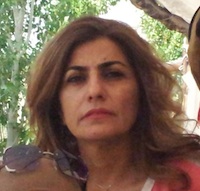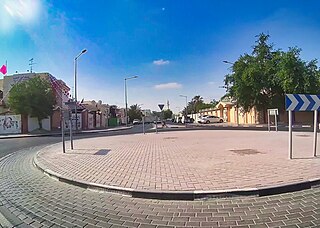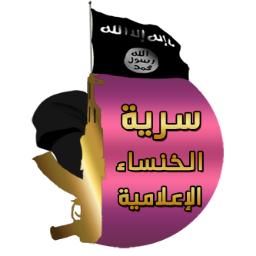al-Khansa was a 7th-century female Arabic poet.
Khansa(a) may also refer to:
Hassan, Hasan, Hassane, Haasana, Hassaan, Asan, Hassun, Hasun, Hassen, Hasson or Hasani may refer to:
EL, El or el may refer to:
A hind is a female deer, especially a red deer.
Khamsa may refer to:
Al-Khansaa was an online women's magazine launched in 2004 by a Saudi branch of al-Qaeda.
Al-Khwarizmi or Muḥammad ibn Mūsā al-Khwārizmī was a Persian scholar who produced works in mathematics, astronomy, and geography.
Fitna or Fitnah may refer to:
Nasir al-Din was an honorific title, and is an Arabic masculine given name.
Hamadani, Hamedani or Hamadhani denotes something or someone related to the town of Hamadan in Iran, and may refer to:
Geber is the Latinized form of the Arabic name Jabir. It may refer to:
Dorayd bin Al Summah or Duraid son of As-Simmah was a pre-Islamic warrior, knight and poet of the Hawazin tribe. He was also the chief of the Banu Jusham bin Sa'd, or the modern day Al-Qthami clan of the tribe of Otaibah. Historians have cited that he contributed to more than a hundred battles for his tribe. By the time of the rise of Islam, he was already an old man and remained a pagan.

Khansa is a crater on Mercury. It has a diameter of 111 kilometers. Its name was adopted by the International Astronomical Union (IAU) in 1976. Khansa is named for the Arab poet al-Khansa, who lived in the 6th century CE.

Khansaa Alshiha is a Saudi Arabian academic, researcher, and civil rights activist. Alshiha has Ph.D in Applied Sociology.

Al Hilal a is multipurpose district in central Doha. It is home to the Doha Mall, the city's first shopping centre. Prior to the 2010 census, Zone 41 comprised Al Hilal West, but the zone was later transferred to Nuaija. Many sizable residences are situated here, and the Embassy of India, Doha formerly had its headquarters here.
Khansaa - Shetheh is a Syrian village located in Al-Suqaylabiyah Nahiyah in Al-Suqaylabiyah District, Hama. According to the Syria Central Bureau of Statistics (CBS), Khansaa - Shetheh had a population of 715 in the 2004 census.

The Al-Khansaa Brigade was an all-women police or religious enforcement unit of the jihadist group Islamic State (IS), operating in its de facto capital of Raqqa and Mosul.

In the surviving historical record, medieval Arabic female poets are few compared with the number of known male Arabic-language poets: there has been 'an almost total eclipse of women's poetic expression in the literary record as maintained in Arabic culture from the pre-Islamic era through the nineteenth century'. However, there is evidence that, compared with medieval Europe, women's poetry in the medieval Islamic world was 'unparalleled' in 'visibility and impact'. Accordingly, since the beginning of the twenty-first century, scholars have emphasised that women's contribution to Arabic literature requires greater scholarly attention.

Rithā’ is a genre of Arabic poetry corresponding to elegy or lament. Along with elegy proper, rithā’ may also contain taḥrīḍ.
Laylā bint Ṭarīf was a female warrior and poet and one of the Khawarij, a group known for its members' fanaticism and violent opposition to the established Caliphate, believing that leadership of the Muslim community was not limited to male Arabs of the Quraysh tribe. On the basis of women fighting alongside Muhammad, the Khawarij have viewed combat as a requirement for women, and Laylā bint Ṭarīf is a prominent example of this custom. Laylā was the sister of the Kharijite leader al-Walid ibn Tarif al-Shaybani. After al-Walīd's death, Laylā took on the leadership of his army and fought two battles before her clan forced her to step down.
Nasruddin was originally a honorific title and is a masculine given name and surname of Arabic origin. There are many variant spellings in English due to transliteration including Nasir al-Din, and Nasiruddin.